The sandman cometh to Venice
October 12, 2010
On paper, it sounds almost boring: Move some sand across a beach. But when you’re talking about Venice Beach—L.A.’s seaside cradle of Beats and bodybuilders, celebrities and chainsaw jugglers—not even the sand wants to be ordinary.
So next month, engineers will be dodging just about everything from roosting birds to running grunions to random pipes and renegade sunbathers when the county’s long-awaited shore refurbishment gets underway.
The $1.66 million project, approved by the Board of Supervisors on Tuesday, will restore a section of beach around the landmark lifeguard headquarters that has been significantly eroded in recent years.
Since the construction of Venice’s breakwater in the early 1900s, the coast has been susceptible to erosion because the sand can’t be replenished by natural wave action. Over the decades, sections of beach have been periodically nourished, although fresh sand has not been added since the 1970s.
But the winter storms of 2004 and 2005 left the beach particularly damaged, and the wind and waves chewed it up again last winter. As a result, the renowned attraction was reduced to a dispiriting shadow of its famous old self, and local beachgoers couldn’t help but mourn the estimated 30,000 cubic feet of sand that disappeared.
The refurbishment will restore a segment of beach about the size of two city blocks where the public parking lot, recreational facilities and lifeguard headquarters are located.
“At first glance, it’s a very simple project,” said Department of Public Works Project Manager Sam Shadab. “But the devil is in the details.”
Dry sand will be hauled a half-mile or so into the eroded area from a 2,500-foot-long stretch of better-stocked beaches north of the breakwater. A convoy of massive earth-moving equipment will scoop two or three feet of surplus sand from the “borrow” area’s surface, then transport it in 10- or 20-cubic-yard loads to the eroded area.
 Each borrow site, Shadab said, will be barricaded with safety fencing to protect the public from construction activity. Public access to the water will be limited during construction to small openings in the barricades every 150 feet or so.
Each borrow site, Shadab said, will be barricaded with safety fencing to protect the public from construction activity. Public access to the water will be limited during construction to small openings in the barricades every 150 feet or so.
Each load, Shadab said, will be spread over the new site to smooth the beach and cover the exposed stone facing in front of the lifeguard building. The project should take only six to eight weeks, he added – a good thing “because we have a very small window of time.”
Why the limitations? Shadab and Public Works Section Head Kamel Youssef chuckle as they tick off the complications engineers will face.
“Well, we cannot operate the equipment on nights or weekends,” explained Youssef, who is overseeing the project. “And we cannot have construction from May to September, because that is beach season.”
“Then,” Shadab added, “we have the roosting season of the Snowy Plover. And we have to avoid the running of those little fish that look like snakes – the grunion. And we have to be cognizant of the California Brown Pelican and the California Least Tern, and make sure they have not returned late in the season.”
And then there’s the human wildlife, Youssef added.
“Some of this equipment weighs 20 tons with a 20 cubic yard capacity and a cockpit 10 or 12 feet off the ground,” he noted. “The wheels are as big as a man. The operators cannot see everything like you can see in your vehicle. So we have to have an extensive and detailed security system, and pilot cars in front of the convoy so that people don’t get run over. Some people, as you know, sleep in the sand.”
Then there’s the 66-inch drainage pipe that movers will have to avoid crushing, a challenge engineers plan to meet with a temporary “bridge” of reinforced concrete. And yet, Youssef and Shadab said, the strategy is still cheaper and less complicated than hauling in inland sand that might have damaged roads in other municipalities, widened the project’s carbon footprint and threatened the beach’s ecosystem.
The project, Youssef said, should be completed in January – one last obstacle permitting.
“If we have a lot of storms and rain,” he noted, “the equipment might sink into the sand.”
Posted 10/12/10
Skirball Bridge demo—and detours—begin
October 12, 2010
Getting over the Sepulveda Pass is going to be trickier than usual over the next five nights.
Demolition work on the north side of the Skirball Center Drive Bridge over the 405 Freeway is set to begin tonight, requiring full closure of the freeway between the hours of 9 p.m. and 6 a.m. The after-hours work is expected to continue for five consecutive nights.
Metro has assembled a fact sheet on the Skirball Bridge segment of the project, along with construction information and detour maps.
The bridge is one of three affected by the Sepulveda Pass Improvements Project to build a 10-mile northbound carpool lane on the 405 Freeway. Work on the first, the Sunset Bridge, got underway in July. Metro officials said recently that community concerns about the handling of the third bridge, at Mulholland Drive, has led to a rethinking of that part of the process. Unlike the other bridges, which are being torn down and rebuilt in segments, the Mulholland Bridge now is expected to be torn down all at once after a new replacement bridge is constructed nearby.
Posted 10/12/10
Updated 10/15/10: That was fast. Contractors made quick work of demolishing the north side of the Skirball Bridge over the 405, finishing in three nights instead of the expected five. They’ll be back in a month for two nights of abutment demolition. The rebuilding is expected to take seven months. Then the process will begin all over on the bridge’s south side.
Fighting erosion at Venice Beach
October 7, 2010
 A massive sand-moving mission is about to get underway at Venice Beach.
A massive sand-moving mission is about to get underway at Venice Beach.
The Board of Supervisors on Tuesday will consider a $1.66 million Venice Beach Refurbishment Project that would bring in earth-moving equipment to relocate 30,000 cubic feet of sand from north of the Venice breakwater to the area in front of the lifeguard headquarters. That area, half a mile south of the breakwater, suffered heavy erosion in the winter storms of 2004-5 and again last winter. The six-to-eight week project will spread a fresh layer of sand more evenly and widen the surface of the beach to increase the recreational area and better protect nearby coastal businesses and residences from flooding and storm damage.
Because the project will affect public access to the beach, it is being scheduled for the winter months when crowds are smallest.
Posted 10/7/10
Learning lessons by HeArt
October 7, 2010
Brendy Giron, a.k.a. “Jinxie,” ditched school daily to tag with her boyfriend. Her classmate, Janette, cut class to chill by the gym.
Miguel Hernandez was so brazenly truant that sometimes as he sneaked out the school door, he’d pass his own mother, who would stake out the campus entrance in a vain attempt to intercept him. Outside, his girlfriend, Elizabeth, would be waiting, having blown off her classes as well.
This is how high school kids end up in alternative and continuation schools in Los Angeles County, which is where all four teenagers eventually landed. Their new classroom, however, is no ordinary alternative.
Every morning, they get five hours of regular classroom instruction; then, in the afternoons, artists come in to teach painting, photography, video production, dance, water color and other arts courses. If they show promise—and stay in class—they have a shot at internships at production companies and art institutions.
“This is an arts high school specifically for alternative education students,” says Cynthia Campoy Brophy, proudly striding down a bright blue hallway in the Hollywood Media Arts Academy.
Jointly run by the Los Angeles County Office of Education (LACOE) and The HeArt Project, a nonprofit founded by Campoy Brophy that has offered arts programs to at-risk students in the county for 18 years, the academy is the newest—and smallest—public school of the arts in L.A. County.
The academy has been open for a year and a half, although the HeArt Project took over the arts component only a few months back; an open house to celebrate the new school year was held in September. Current enrollment is around 30 students, but officials hope that, as the word gets out, that number will increase.
“What we’re trying to do is use The HeArt Project and artists who work with the kids to inform and really engage them at a deeper level of career opportunities in the entertainment industries,” says Gerald Riley, assistant superintendent of educational programs at LACOE.
Situated in a low-slung building off Santa Monica Boulevard, the school looks a lot like the show business warehouses that surround it. Inside, however, its rooms are spacious and airy, the walls freshly painted in bright colors and covered with words intended to inspire ambition: sound engineer, director, percussionist, cartoonist, costume designer. The lettering over the doorway in the bright yellow lobby warns, “You are entering a creative space.”
Campoy Brophy, executive director of The HeArt Project, said the split school day is modeled after the more renowned Los Angeles County High School for the Arts, colloquially known as LACHSA. : “The students here have 10 hours of arts programming a week,” she says. “They do their core curriculum in the mornings and we get them in the afternoons.”
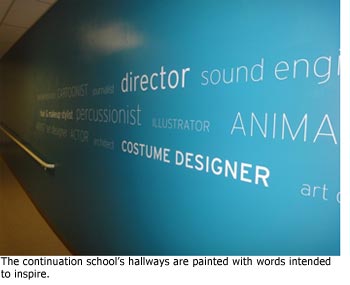 Unlike LACHSA students, who must audition and submit portfolios of artwork, however, the Media Arts Academy kids usually have no prior art training and find the school via guidance counselors or word of mouth. Often, Campoy Brophy says, they’re the sort of students “who only come to school on the arts day”—creative but struggling kids who, for a variety of reasons, are failing to thrive in conventional high schools.
Unlike LACHSA students, who must audition and submit portfolios of artwork, however, the Media Arts Academy kids usually have no prior art training and find the school via guidance counselors or word of mouth. Often, Campoy Brophy says, they’re the sort of students “who only come to school on the arts day”—creative but struggling kids who, for a variety of reasons, are failing to thrive in conventional high schools.
Some have had chaotic home lives. Some have trouble saying no to peer pressure. Some have just sold themselves short or missed too much school or fallen in with a bad crowd.
“They aren’t necessarily problem kids, they just need a smaller setting,” says Principal Jennifer Flores, who oversees the academy and six other alternative schools for LACOE.
Student poetry on the walls of the dance room hints at their journeys: I am random and loud/I pretend I’m a makeup artist… I am handsome and nice/I pretend to be Ronaldinho… I am funny and nice/I worry about my homies…
“They come from all over,” smiles Elizabeth Meza, who works in the school office. “Koreatown. Santa Monica. Pacoima. One boy came in every day from Norwalk on public transportation. He said he liked it because it was a safe place for him and the art kept him out of trouble. He’s going to graduate in December, and he’s going to community college, I hear.”
Brendy Giron says she was a middle school student in the San Fernando Valley when her mother began moving around in search of a better job. They ended up in Koreatown, and Giron enrolled at Los Angeles High School, where she met a boy in her second period class who shared her fascination with graffiti art, or, as they termed it, “graf.”
“He had this thing on his notebook, and I go, ‘Oh, you’re a graffer,’ and he’s like, ‘Yeah, what do they call you?’ And I told him what they call me, which was Jinxie. And he was called Obie. And we were all in, like, the love zone, and when he would go writing, I would go writing, too.”
But their habit took on a life of its own, she says. She spent less and less time in classes. She switched schools, but jumped the fences to be with him. She tried independent study and ditched the test days.
One night, she says, she got caught tagging on a mid-city rooftop. Meanwhile, her boyfriend was getting into his own scrapes. Eventually, their pastime became less novel. When her boyfriend told her about the academy, where he had been enrolled for a time, she begged her mother to let her go there. The boyfriend ended up in a juvenile probation camp, but Giron, now 18, says she hopes to study fine art someday.
“I don’t want people to look at my art and be, like, ‘Oh, that’s just tagging.’ I want to do it right, you know?”
Other students see the academy more as a place to learn a new skill. Janette—who school officials insisted be identified only by her first name because she is 16 and a minor—says the promise of art at the end of the day kept her in the classroom: “There was nothing at my other schools that I was that interested in.”
For Elizabeth, 17, the academy has been a lifeline: “I don’t know where I’d be if I didn’t come here. It got the point where my old school didn’t want me and I just didn’t care anymore.”
The school was reluctant at first to admit her to the same school as her boyfriend, but she has applied herself, and for the first time in her life she is earning As and Bs in academic classes. “I just entered the 10th grade, which for me was a big deal. I have a lot of catching up to do.”
Her boyfriend, 18-year-old Miguel Hernandez, says he has stopped cutting class (a relief to his parents) and is hoping to win an internship after he graduates in December. Campoy Brophy says she has been talking to a commercial television production company about the student. As it turns out, she says, he has a knack for cameras.
“Honestly, I didn’t want to come here at first,” he recalls. “I thought it was going to be just another continuation school where they give you a packet of work and tell you to sit down and do it.” But during the summer, he learned photo editing and photography, “and I loved it.”
“It’s like, you can pass by someone or something a thousand times and you wouldn’t pay attention to it. But with pictures, you learn to pay attention. You see things in a different way—a better way.”
East Coast prof plays ball with L.A.
October 7, 2010
 Among social services experts in Los Angeles, Dennis Culhane is considered top drawer. During the past few years, he’s won many fans for his cutting edge collaboration with county officials in determining how government services are used by the region’s disadvantaged populations.
Among social services experts in Los Angeles, Dennis Culhane is considered top drawer. During the past few years, he’s won many fans for his cutting edge collaboration with county officials in determining how government services are used by the region’s disadvantaged populations.
Culhane also likes a good baseball game, which makes it a good thing he lives 2,500 miles away. On Wednesday, he was in the stands in Philadelphia as the home-team pitcher threw a no-hitter against the Cincinnati Reds in their first playoff game.
“I love Philly,” said Culhane, a professor of social policy at the University of Pennsylvania.
Talk about your telecommute.
Culhane is now embarked on another study with L.A. County. This one will track the kinds and costs of government services used by about 30,000 former foster children and probation youths who left the county’s care—or “aged-out”—between 2002 and 2004. The hope is that the analysis will lead to improving and streamlining programs.
The innovative research relationship began in 2007, when Culhane met Manuel Moreno of the Chief Executive Office at a gathering on homeless policy at UCLA. Moreno was well regarded in his own right; Computerworld Magazine named him one of this year’s top 100 information technology innovators for his work in consolidating data across the county’s social service agencies.
The two researchers hit it off.
“They were really far ahead of the curve,” Culhane said of the work being performed by the research arm of the CEO’s Service Integration Branch, which Moreno heads.
“He’s an academic who really knows how to address policymakers in ways they understand,” Moreno said of his East Coast collaborator, who coauthors an annual report to Congress on homelessness.
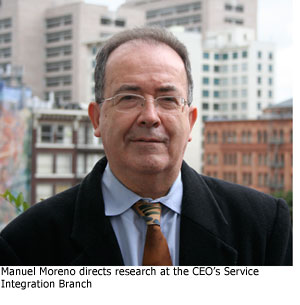 Within a year of their meeting, Moreno and Culhane had tackled a joint project detailing the costs and types of county services being used by the county’s General Relief recipients. Joining the two back then was Culhane’s frequent research partner, University of Pennsylvania assistant professor Stephen Metraux, who also is involved in the current study of foster care and Probation youth.
Within a year of their meeting, Moreno and Culhane had tackled a joint project detailing the costs and types of county services being used by the county’s General Relief recipients. Joining the two back then was Culhane’s frequent research partner, University of Pennsylvania assistant professor Stephen Metraux, who also is involved in the current study of foster care and Probation youth.
That effort, funded by a $275,000 grant from the Conrad N. Hilton Foundation, will reach beyond data collected by county departments and include state educational and employment records.
The researchers hope to be able to determine which transitional programs work best by seeing how the youth fared in staying in school, obtaining jobs and avoiding legal trouble. They’ll also explore issues of substance abuse and other health and mental health issues.
Data for the study should start flowing to Culhane at the University of Pennsylvania within a month or so, after information-sharing agreements are signed with state and county agencies. The report is scheduled for completion next spring.
“Working with Dennis,” Moreno said, “we are going to be able to tell how the youth have fared either in becoming self-sufficient or in becoming dependent on government services.”
The Department of Children and Family Services is eager for the results.
“Studies like this one help us identify how resources can be used more effectively to help children during a very challenging time—the transition to adulthood,” said DCFS director Trish Ploehn.
The researchers have more projects planned down the road.
Culhane is currently consulting with Moreno on a cost-benefit analysis of Project 50, the innovative program that provides housing and other services to Skid Row’s most chronically vulnerable homeless men and women.
The two men also plan to explore how veterans in Los Angeles use local services as part of a MacArthur Foundation grant Culhane is overseeing.
Posted 10-6-10
Malibu’s worthiest of waves
October 7, 2010
It has starred in more than 75 movies. It is the namesake for one of California’s best known environmental groups. And its “original perfect wave” has made Malibu a Mecca for generations of surfers.
Now Surfrider Beach—the birthplace of modern surfing in California—will add yet another accolade to its long list of laurels: On Saturday, it will officially be dedicated as the nation’s first World Surfing Reserve.
“These special surf spots are the Yosemites of the coast,” said Dean LaTourrette, executive director of Save The Waves Coalition, a non-profit environmental organization based in Santa Cruz County that has spearheaded the international initiative to designate and preserve iconic surfing coastlines worldwide.
“People need to understand how valuable and fragile they are, and the World Surfing Reserve designation will help the international and local communities focus on protecting them.”
Although the World Surfing Reserves designation is purely honorary and will have no regulatory authority or impact, LaTourrette said the groups involved hope it will raise awareness. The designation, modeled after a successful Australian program that has singled out more than a half-dozen of that continent’s beaches, was inspired, he said, by UNESCO’s World Heritage Sites, which help preserve locations of cultural significance.
The Malibu reserve, he said, will be the first in a series of World Surfing Reserves—“a UNESCO of surfing”—planned for pristine coastlines in Australia, Hawaii and other important surf destinations.
Surfrider Beach, formally known as Malibu Lagoon State Beach, lies near the Malibu Pier on the northern arm of Santa Monica Bay. Although it has been plagued over the years by crowds and water quality issues, its long, smooth-breaking waves are considered the “definitive California pointbreak,” according to “The Encyclopedia of Surfing” by former Surfer magazine editor Matt Warshaw.
Surfrider beat out more than 125 nominees for the inaugural designation, including Trestles, Mavericks, Waikiki, Manly Beach in Australia and breaks in Indonesia and Europe. The choice, LaTourrette said, was based in part on the long fight surfers have waged to help keep it clean.
Situated at the mouth of the Malibu Creek watershed and Malibu Lagoon, Surfrider’s history has been entwined with the environmental movement since the late 1960s, when runoff began fouling the lagoon with waste and sewage. In fact, the Surfrider Foundation, one of the state’s most dogged environmental groups, was founded as a response to Malibu’s environmental issues.
The World Surfing Reserve designation “is a statement by the global surfing community that Malibu is extremely important to surfing and should be protected,” said Chad Nelsen, the Surfrider Foundation’s environmental director.
“Of course, WSR do not have any legally binding protection, so the real value of the WSR will be demonstrated by local and global support for the protection of Malibu.”
In recent years, a number of public and private sector initiatives have been undertaken to reduce the pollution that has long plagued the waters of Surfrider—the most recent being Malibu’s newly opened Legacy Park.
Beneath the $38-million project is a network of pipes and filters designed to remove bacteria and contaminants from stormwater runoff in Malibu Lagoon, Malibu Creek and Surfrider. Among the governments donors was L.A. County, which contributed $700,000. Private donors included Rita Wilson and Tom Hanks, Don Henley, Rob and Michele Reiner, the Eli and Edythe Broad Foundation and the Marilyn and Jeffrey Katzenberg Family Foundation.
As part of the surfing reserve designation, a local stewardship council has been created to help coordinate and publicize Surfrider’s various preservation efforts. Members so far include such local surfing legends as Allen Sarlo, Andy Lyon and Steven Lippman, community leaders such as Michal Blum of the Malibu Surfing Association and Jefferson “Zuma Jay” Wagner, the wave-riding mayor of Malibu.
“We’re the local ones who will keep an eye on it,” said Wagner, adding that the designation will be invaluable as a fundraising and advocacy tool.
“The social stigma of messing with a preserve may not be much to a lawyer, but, boy, to the general public, that’s a battle cry.”
The dedication on October 9 will begin with a sunrise ceremony on the beach and a blessing by local Chumash leader Mati Waiya, followed by a paddle-out, a formal dedication at 11 a.m. and an evening celebration at Duke’s Malibu.
California Coastal Commissioner Ross Mirkarimi said the commission has already adopted a resolution supporting the World Surfing Reserves program, which he said “will benefit not only surfers, but also the greater coastal community.”
Posted 10/07/10
Eclectic world music weekend at the Ford
October 7, 2010
Soft breezes, swaying palm trees, endless beaches, sunset luaus—the Hawaiian Islands have captured the popular imagination like few other places on earth.
Friday, October 8 at 8:00 p.m., the County’s John Anson Ford Amphitheatre presents “AlohaFest! Rhythm of the Islands,” a narrative in music and dance dramatizing the migration of Pacific Islanders from Tahiti to Hawaii. The work features authentic dances conceived by Hula Halau Keali’i O Nalani accompanied by the music of Willie K, Kumu hula Keali’i Ceballos, a guitar master and singer-songwriter who has appeared in concert with such artists as B.B. King and Willie Nelson. Here’s a handy postcard flyer with all the details.
Then on Saturday, October 9 at 8:30 p.m., the Ford will whisk concertgoers to the Israeli capital when LA-based Keshet Chaim Dance Ensemble, joined by Israeli singing stars Rami Kleinstein and Miri Mesika, offers an evening of “Jerusalem Soul.” It’s an inspirational work evoking a yearning for peace, hope and healing in the name of the city that serves as a spiritual center for the Jewish, Christian and Islamic faiths. Here’s the postcard flyer.
Order you tickets online here.
Posted 10/07/10
Game on at El Cariso
October 6, 2010
Heads up, El Cariso Park-goers: Get ready to kick it in new ways at your favorite 79-acre spread.
A multi-year, multimillion dollar renovation and building initiative is underway at the county park, set against a striking mountain backdrop in Sylmar. The latest components—including two new artificial turf soccer fields and a cutting edge “universal play area”—were approved Tuesday by the Board of Supervisors.
And there’s much more on the horizon: an $11.5 million gymnasium/community building with indoor basketball facilities, a full kitchen, an onsite office for sheriff’s deputies and gathering spaces for park-users, which is welcome news for a seniors’ group that now must meet elsewhere. A contractor has been selected to design and build the new structure, with groundbreaking expected to take place early next year. The job is set to finish in 2012.
Also on tap for the park is a “Smart Garden Learning Center,” where people from the community can learn the fine points of composting and environmentally sound landscaping techniques. The center is scheduled to open in February.
 All this comes on top of a slew of other improvements in recent years that have included: a $5.8 million renovation of the park’s swimming pool facilities; new water-saving irrigation measures in the park and on its golf course; upgraded restrooms, drinking fountains, picnic areas and walkways; and the installation of a park fitness zone featuring outdoor gym equipment.
All this comes on top of a slew of other improvements in recent years that have included: a $5.8 million renovation of the park’s swimming pool facilities; new water-saving irrigation measures in the park and on its golf course; upgraded restrooms, drinking fountains, picnic areas and walkways; and the installation of a park fitness zone featuring outdoor gym equipment.
The amenity infusion means
more park to love for people like
Alina Mendizabal, whose family has made heavy use of El Cariso over the years.
“Basically, my children grew up there,” said Mendizabal, who works at Olive View-UCLA Medical Center and frequently volunteers at the park. Her husband, she said, “lives at the tennis courts.” After neck surgery earlier this year, she took part in water aerobics classes at the newly renovated pool. Her husband even had a (short-lived) side business selling ice cream in a truck outside the park. And now, even though she’s still in her 40s, she’s already looking forward to hanging out in the park’s new community center when she enters her retirement years.
“That’s where we’re going to be all the time,” Mendizabal recently told her husband.
El Cariso provides a “safe, healthy, playful environment, with caring, dedicated staff,” she said. “I always see my neighbors. It’s our community park.”
More than any amenities, she credits the people who work at El Cariso with “making us feel welcome, making us feel valued.”
Her only complaint? “We do need more lighting. That is one thing we do need. It’s really dark in the back on the walking trails.”
El Cariso, designated a county community regional park, is the only one of its kind in the 3rd District.
It was named in honor of the El Cariso Hotshots, an elite interagency firefighting crew that lost a dozen members battling the devastating Loop Fire in 1966.
The park attracted 534,563 visitors last year—a figure that’s expected to jump by 15% to 20% when the new, 15,000-square-foot gym/community center is completed.
 Altogether, the recent and upcoming projects at the park represent an investment of more than $34 million, according to a tally provided by the county Department of Parks and Recreation.
Altogether, the recent and upcoming projects at the park represent an investment of more than $34 million, according to a tally provided by the county Department of Parks and Recreation.
Funding for the improvements comes from several sources, including Los Angeles County Proposition A bond funds, Proposition 40 state bond funds and various county monies.
The artificial turf soccer fields that were approved Tuesday, along with other improvements totaling nearly $11.5 million, are expected to attract new users to the park. So is the 54,000-square-foot universally accessible playground. Its concept was created in consultation with the advocacy group Shane’s Inspiration, which helps design playgrounds that all children can enjoy, even those in wheelchairs or with other disabilities. (Other such playgrounds are located at Griffith Park and Parque De Los Sueños in East Los Angeles.)
Even now, before these state-of-the-art elements are introduced at El Cariso, “the park gets used very, very well by the community,” said Sandra Chapman, the park’s supervisor. Looking ahead, she said, “I can just see it blossoming.”
Russ Guiney, director of the county’s Department of Parks and Recreation, said all of the recent and coming improvements have two goals in common: making the park better for the environment and better for the people who use it.
“All of this comes together,” he said, “to really make this one of the parks of the future.”
For a map showing where some of the new features will be located, click here.
Holiday show is calling all Capras
October 5, 2010
 This year’s Holiday Celebration promises a little less tinsel, a little more Tinseltown.
This year’s Holiday Celebration promises a little less tinsel, a little more Tinseltown.
The county’s annual free extravaganza will have a shorter running time this year, and for the first time will include short movies from aspiring and professional filmmakers. Would-be Frank Capras have until November 3 to submit their films of two minutes or less on the theme of “childhood memories from the holidays.”
“This town is full of filmmakers. What a great opportunity we might have to reach this kind of artist, especially in Los Angeles, right?” said Adam Davis, who produces the holiday show in addition to his day job running the county’s John Anson Ford Theatres. Arts Commission Executive Director Laura Zucker added: “We tend to forget in Los Angeles that media arts are part of the arts.”
The top 10 short film submissions will be posted online for the public to view and vote on; the best three will each win $1,000 and a spot in the Holiday Celebration lineup.
That lineup this year will feature 22 acts, from a hip-hop-infused “Nutcracker” to an all-women’s barbershop chorus. The county Arts Commission, which produces the show, is shortening the program to three hours from six because of a $150,000 budget cut.
Even in its shorter form, more than 600 performers will be featured in the show, which will take place on December 24 from 3 p.m. to 6 p.m. at the Dorothy Chandler Pavilion. The show will be beamed onto a JumboTron on the Music Center Plaza for any overflow crowd or interested passersby, and also will air on KCET.
This will be the 51st year for the Holiday Celebration, which was started by the late Supervisor Kenneth Hahn in 1959.
Posted 10/05/10




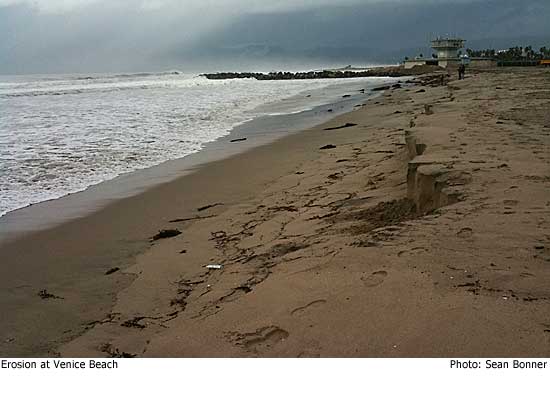
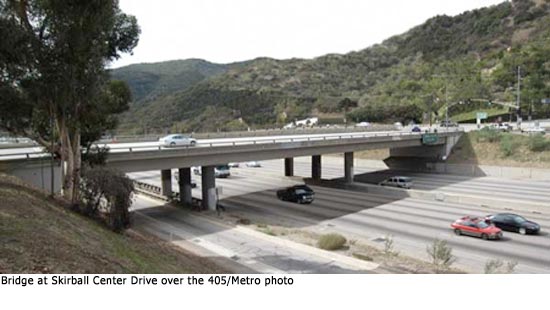
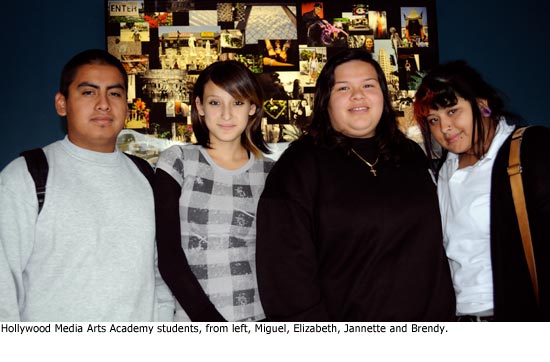
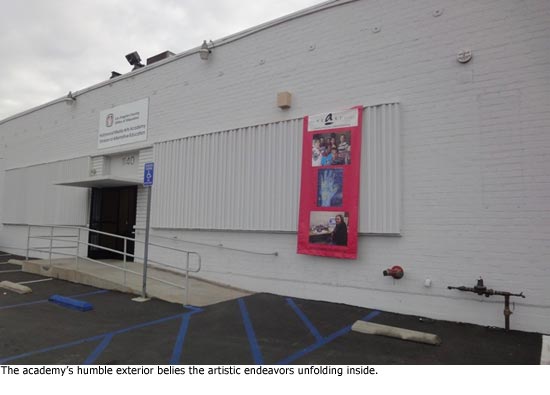


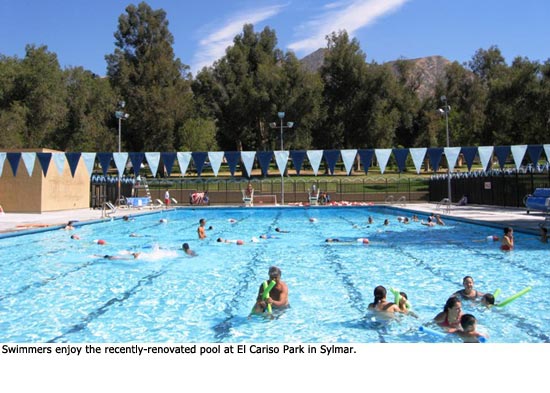






 Check for the latest closure information
Check for the latest closure information








